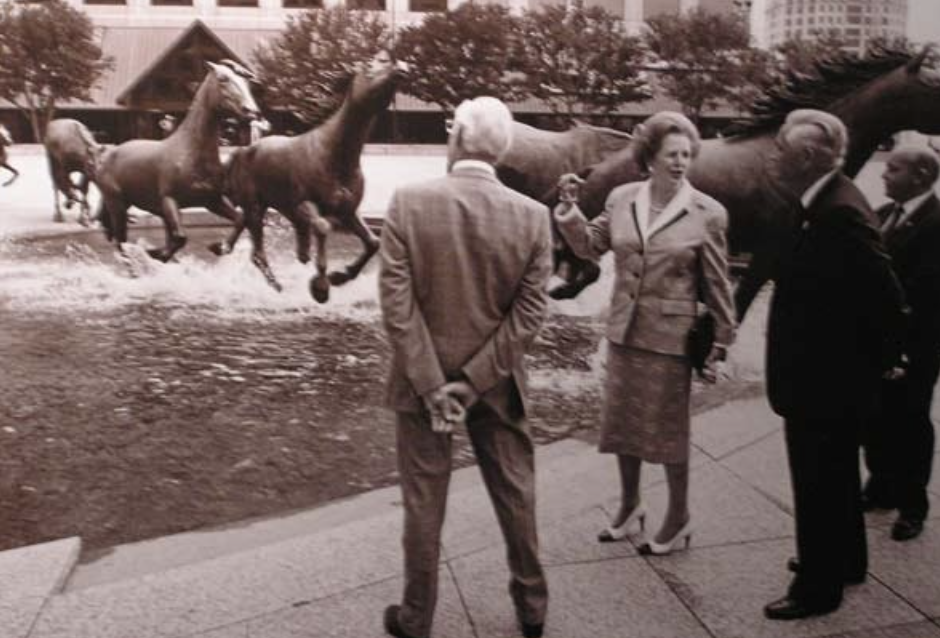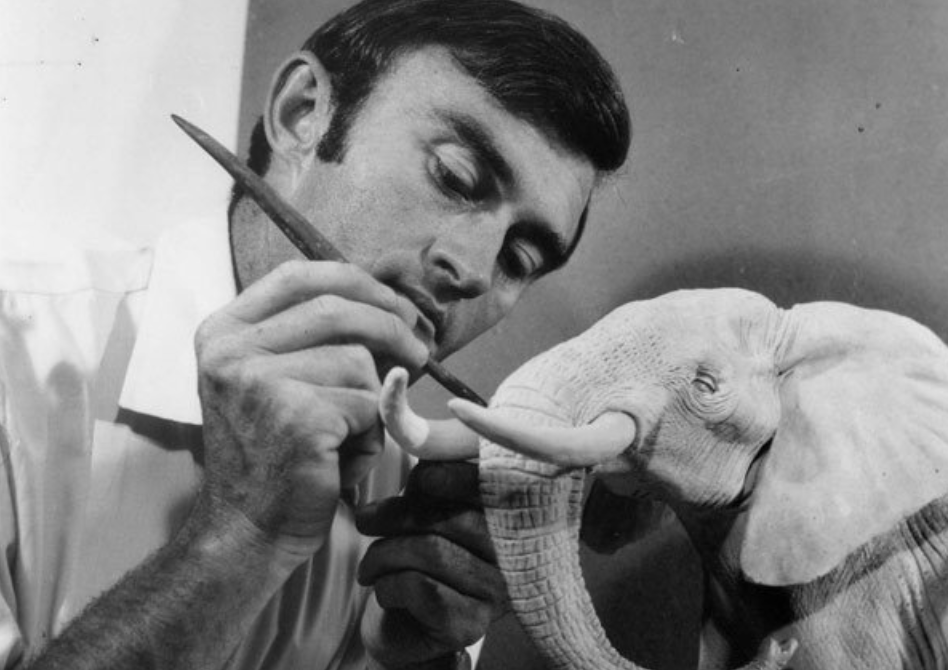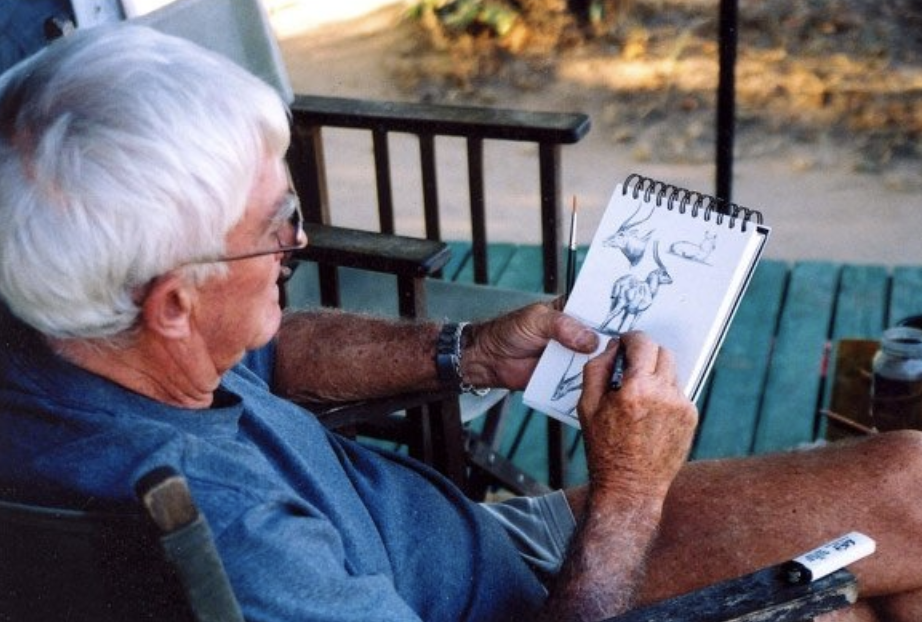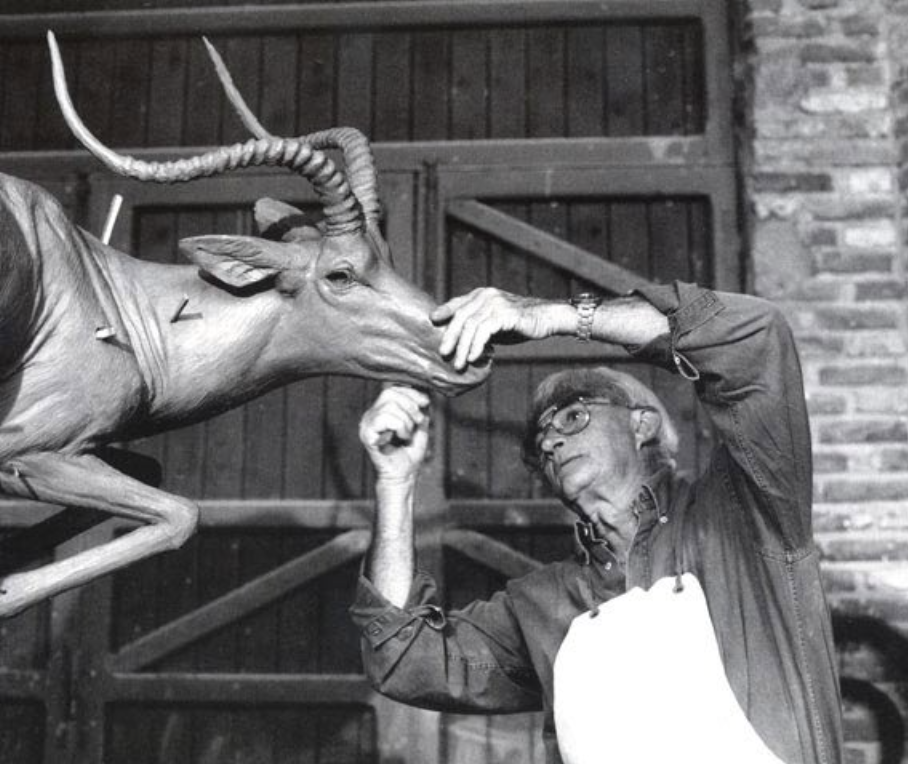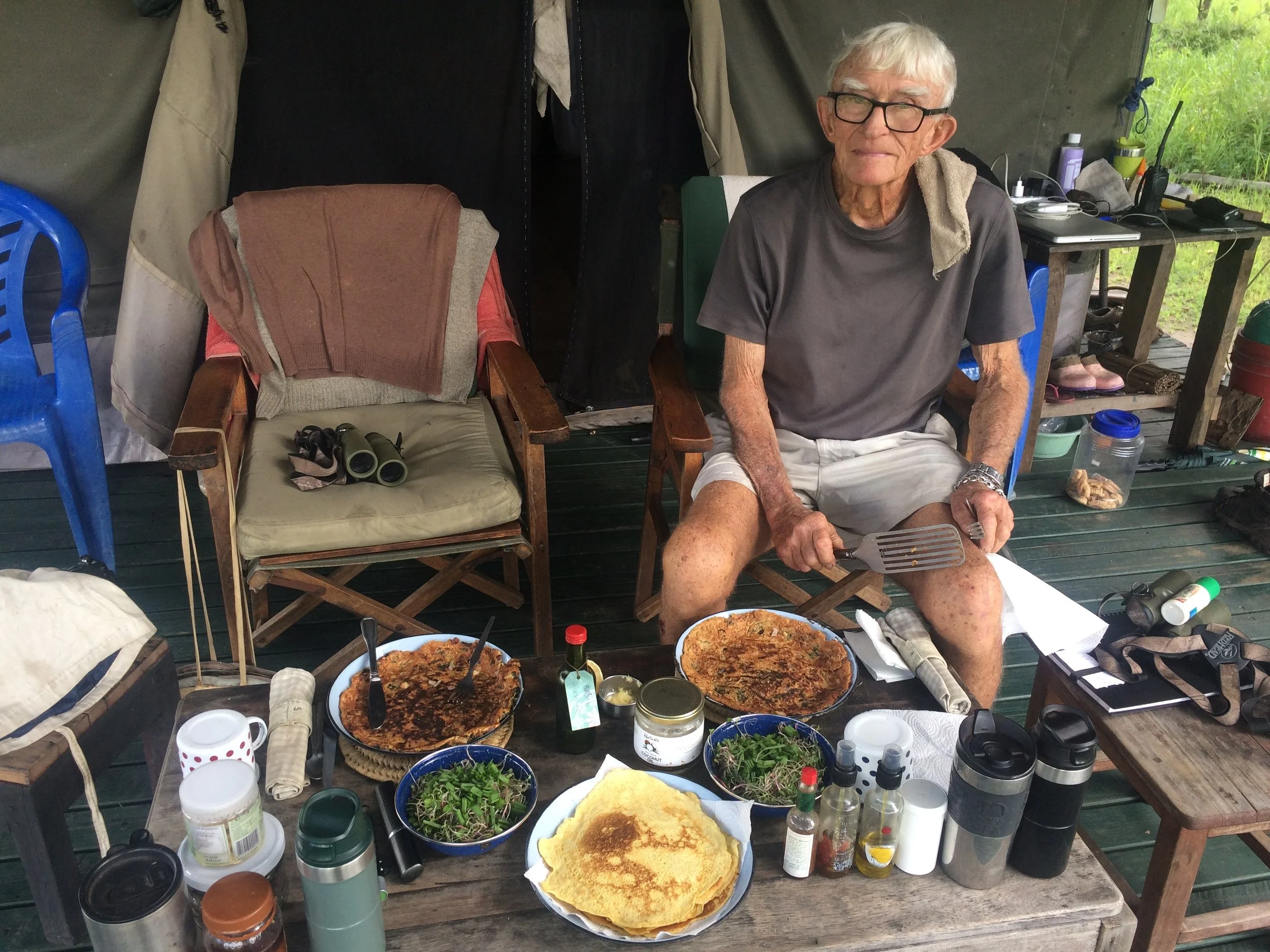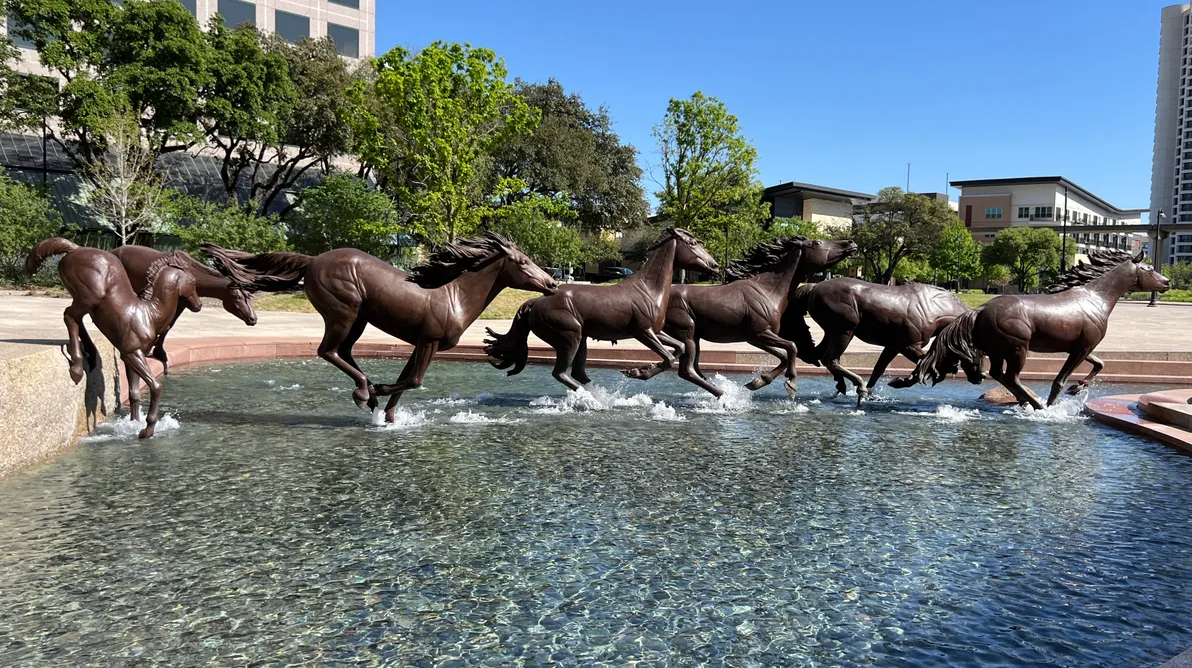
ROB’S LIFE
In 1971, Rob transitioned to full-time sculpture. His bronzes are held in prestigious collections around the world, including those of the late Aga Khan, Queen Elizabeth II, and Jomo Kenyatta. His most ambitious project was The Mustangs of Las Colinas—nine larger-than-life bronze mustangs commissioned by Ben Carpenter for Irving, Texas. The sculpture, completed over seven years, remains one of the largest and most celebrated equine monuments in the world.
Never one to sit still, Rob also found joy in rally driving across East Africa. He started with a Datsun, later upgrading to a Porsche 911 and finally a Renault Alpine. His sculpture career took him to the Galizia Foundry in London and later to the renowned Mariani Foundry in Italy, where he embraced the culture, learned the language, and formed lasting bonds with the artisans there.
A period of fieldwork studying Somali nomads and their camels made Rob realize he needed to be closer to his subjects. In 1987, he committed to a life in the wild, working from mobile camps and a customized horse trailer studio. Eventually, he settled in Tanzania’s Ruaha National Park with his partner, Sue Stolberger.
Rob’s love for birds never waned. In Ruaha, he and Sue continued field studies and contributed to ornithology by identifying new forms of the Red-billed Hornbill (Tockus ruahae) and the Ruaha Chat (Myrmecocichla collaris).
On October 27th, 2023 Rob passed away. He will be missed by all of us that loved his artwork and his constant spark of mischief and laughter. He will also be missed by the wildlife and wild places that he so elegantly captured and so ardently fought to protect.
Rob Glen’s life was one of passion, adventure, and artistry, shaped by a love for life and the natural world. Born in Kenya in 1940 to Scottish parents, Rob often said he was lucky to be born in Africa rather than Glasgow, knowing it gave his life a very different course.
His fascination with wildlife began early. At six, the bright plumage of yellow weavers in his garden sparked a lifelong obsession with birds. His bedroom soon became a mini-zoo, and formal education lost its appeal. By age seven, he was working with John Williams of the Croydon Museum (now the National Museum of Kenya), helping prepare bird specimens and joining expeditions. At 14, he left school to follow his calling.
At 15, Rob was invited on a two-month hunting safari in Tanganyika with Prince Abdoreza of Persia, preparing bird specimens for the prince’s private collection. Though offered a job in Tehran, Rob chose instead to apprentice at the Jonas Brothers studio in Denver, where he learned taxidermy and sculpture under the renowned Colman and Paul Jonas. Returning to Kenya in 1959, he completed national service and spent six years as a taxidermist at Zimmermans, refining his craft.
A chance meeting with Tony Archer at Nairobi’s New Stanley Hotel led to a two-and-a-half-year collecting expedition through remote forests along the Uganda–Congo border. The specimens, many from previously unstudied areas, are now housed at the Natural History Museum of Los Angeles. From 1965 to 1973, further expeditions with John Williams and Randolf Peterson of the Royal Ontario Museum took him to Cameroon. Rob became a leading authority on African bats and discovered a new species, Glauconycteris gleni, named in his honor.
